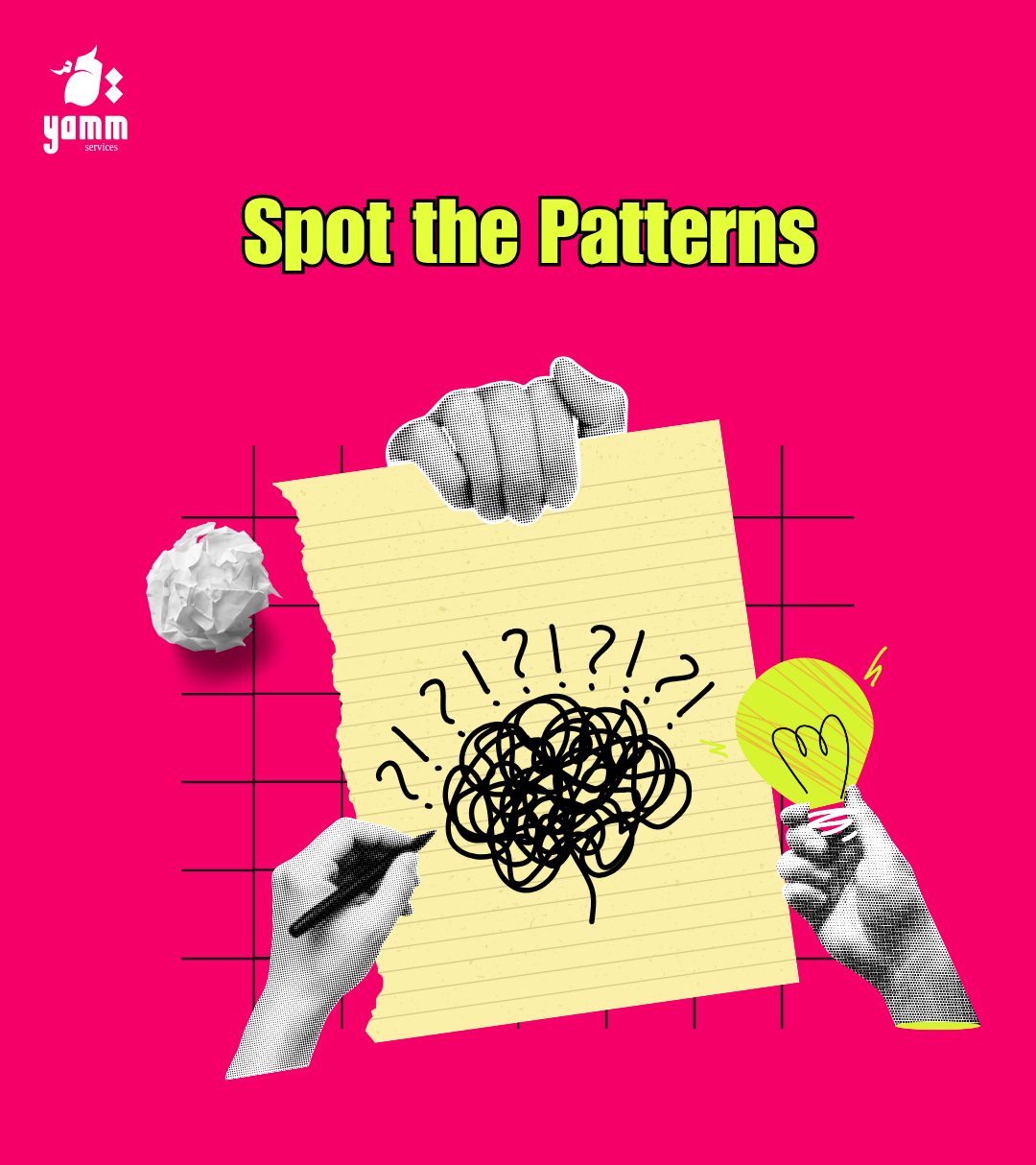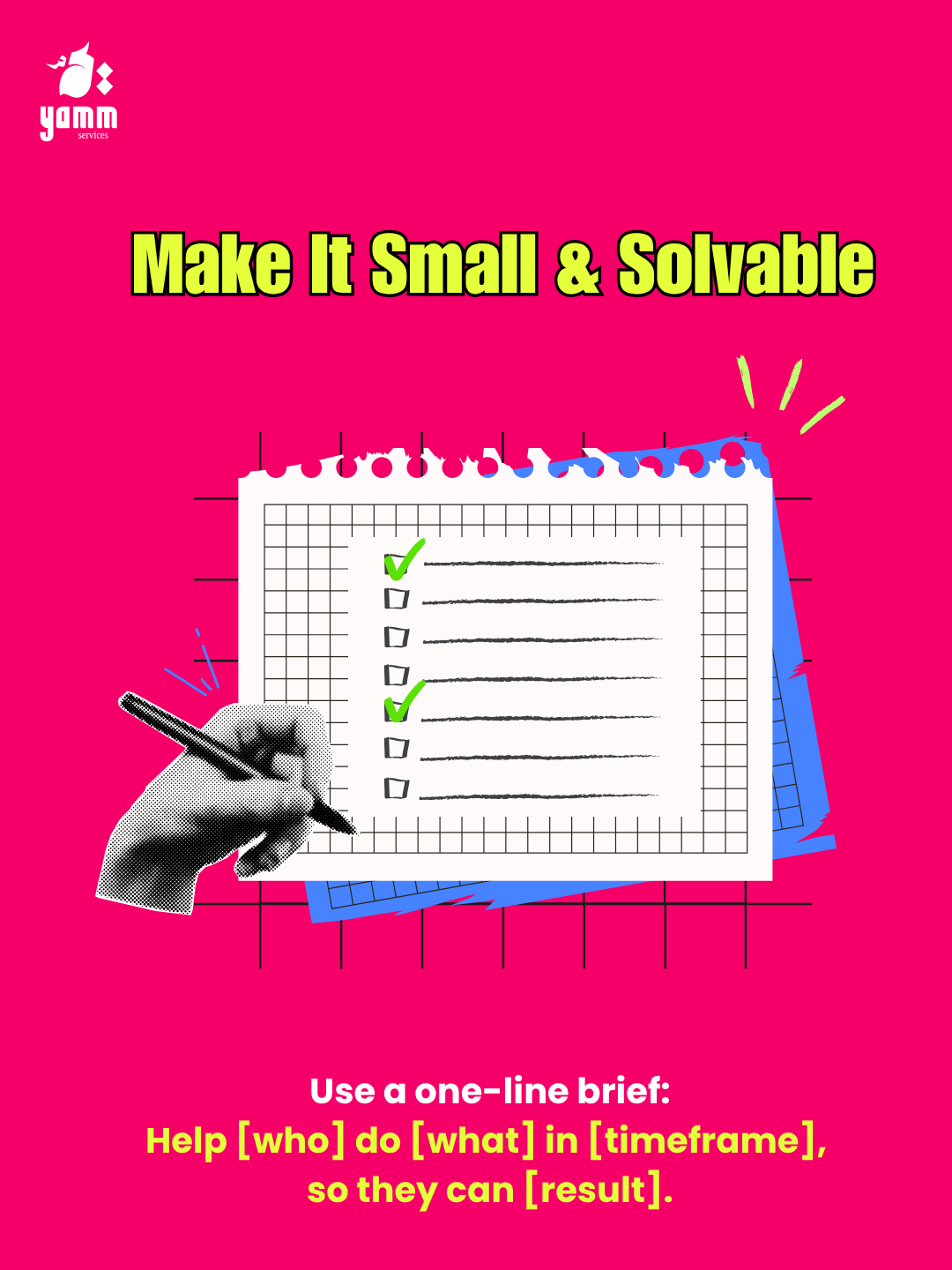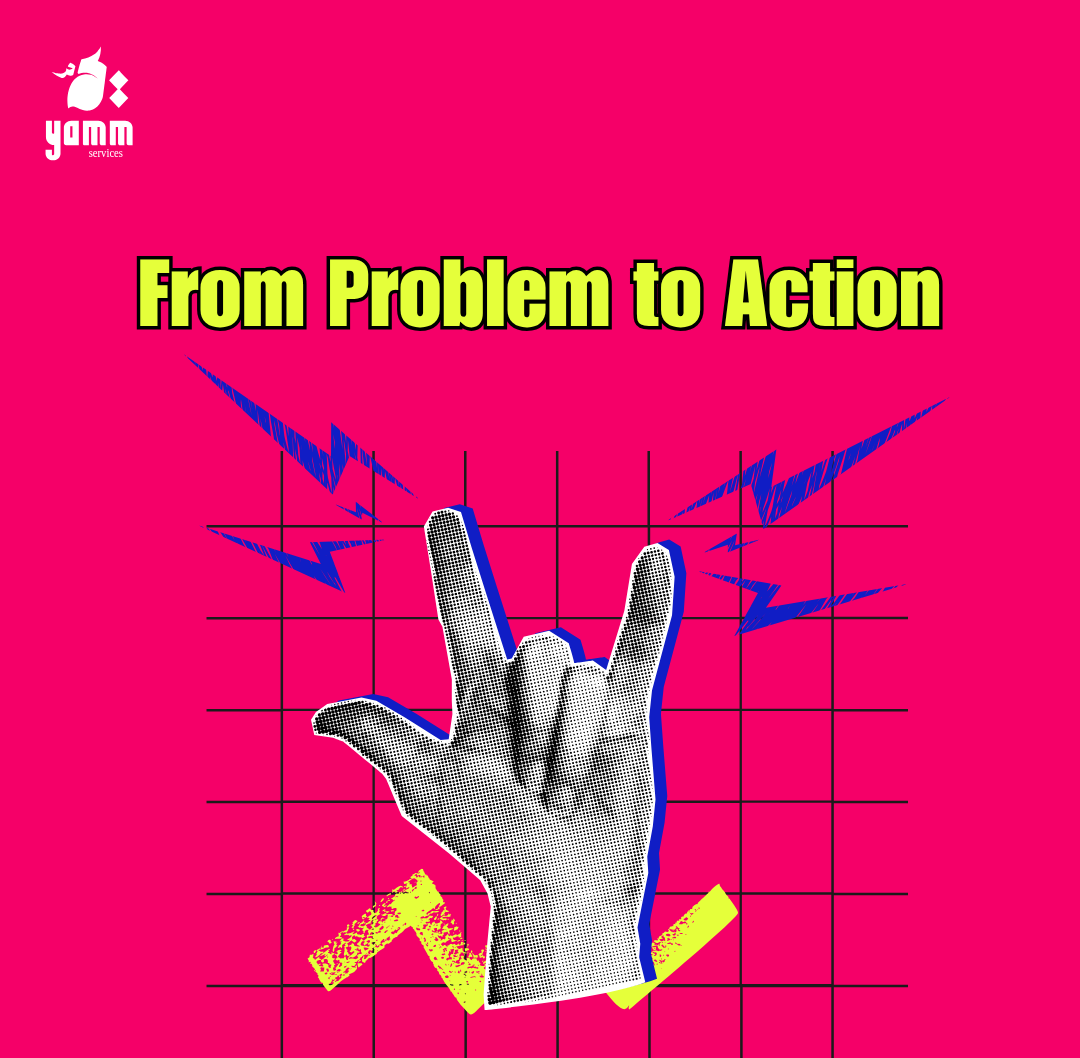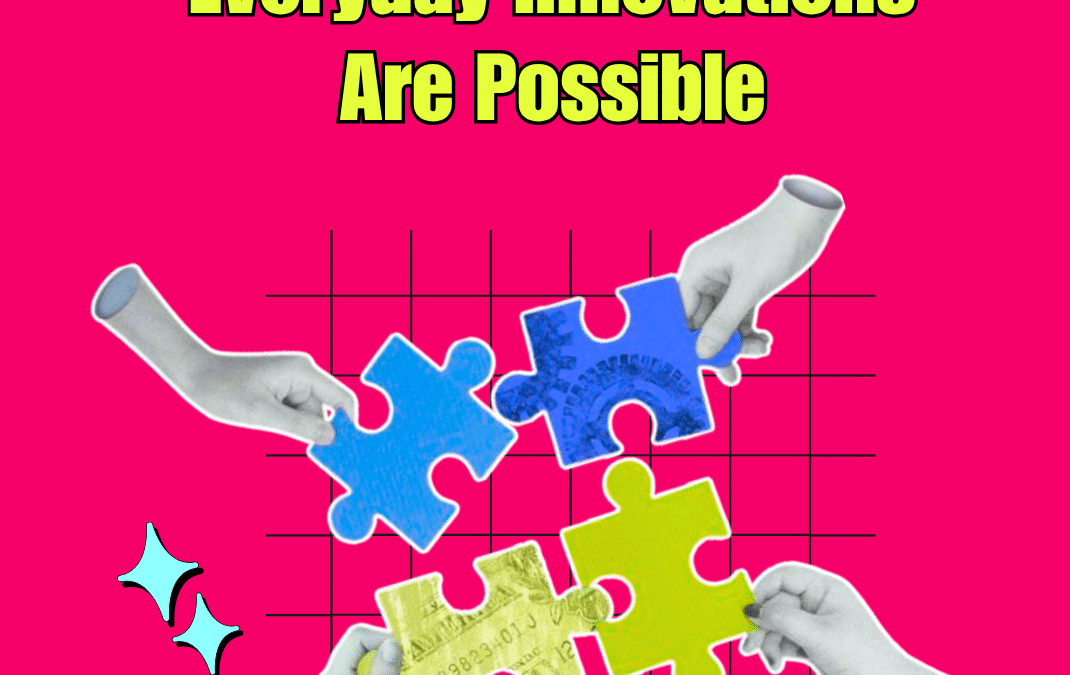Most of the “solutions” I love didn’t start as big ideas. They started in busy rooms, on messy calls, or while I washed dishes (after a long day listening to what wasn’t working for nonprofits). Someone would say, “This thing at our organization is so annoying,” and my brain would file it away. Another person would say it a week later. Then a third. That’s when I know: there’s a pattern worth solving.
This is how we create. We pay attention, ask good questions, and build the smallest useful thing we can. Then we improve it with our community.
The Funding Readiness Checklist is one example; but the process is the point. Here’s the six-step approach that helped us build solutions customized to our clients’ needs: simple, efficient, and light enough to use in real life.
Step 1 - Spot the patterns
First you need to define the problem. You don’t need a giant research project to begin; you need some care and attention. When different people describe the same pain in their own words, something real is happening. I try to write the pattern in one plain sentence.
- “Our story and budget don’t match.”
- “We’re not sure what outcomes to measure.”
- “We’re rewriting the ask every week.”
- “We’re not able to tell our story well.”
If you can say the pattern in one clear line, you can design for it. If you can’t, keep listening.

Try this: over the next two weeks, jot down repeating challenges you hear from your team, other colleagues & partners. When the same one appears a few times, that’s your design brief.
Step 2 - Make the problem small and solvable
Big visions are beautiful. But small, solvable problems are where change starts.
I like to focus on 4 questions: who am I trying to help? What are they trying to do? How much time does it take them to do it? What is the expected result? Then I write a one-line brief to narrow the work:
Help [who] do [what] in [time element], so they can [result].
- “Help program and fundraising align storytelling, regularly, so proposals stop failing on fit.”
- “Help the board share one consistent message, in 10 minutes, so outreach feels easy.”
Pick one team, one function, one moment. Eventually this might scale but it’s important to start small. I try to keep it real and reduce noise at this stage.

Step 3 - Set your guidelines early
Before building anything, I decide how we’ll behave. I clarify the do’s and don’t that need to be addressed at all times. These guardrails keep the work ethical, focused and usable:
- Community first. We respect dignity, we take informed consent, our community has full agency.
- Inclusive model. We set our language and inclusive practices to meet (using diverse pronouns, words not to use, meeting accessibility standards).
- Easy to use. Our solution needs to be easily adopted, avoiding friction and unnecessary complications. Life is complex enough
- Useful and Relevant. Our solution doesn’t need to be perfect, it needs to work very well and be relevant to those who will use it.
Put these at the top of your working doc. When things get heavy, look up at your guardrails and cut what doesn’t serve them.
Step 4 - Dive into the problem

Now I go deeper. Most problems have many roots, so I list what might be feeding this one and ask, “Why are we having this issue?” I talk to people who live it. I review failed and successful attempts. I map what’s in our control.
For complex problems, you can look into Problem Tree models. This is a practice that is helpful for program designs and analyzing core issues.
I dedicate time to this step, and understand the issue very well. The more I have clarity, the sharper my innovation will be. I identify one issue that, when solved, would help get to the solution. After this dive, I write that lever in one sentence and stay focused on it.
Step 5 - Create space for the “moment of clarity”
This is the quiet part most of us skip. Don’t.
I immerse myself in thinking, then pause. I lay out a few possible shapes for the solution, talk them through with someone close to the problem, and then step away. A short walk without my phone helps. Sleeping on it helps even more. I keep a notebook by the bed and write ideas first thing in the morning. My brain works magic at night. My best edits arrive after rest, not during a frantic Zoom. Find your version of that pause!
Step 6 - Plan for adoption
A beautiful idea that no one adopts is just… an idea. Make it easy to try and eventually adopt. I aim for one thing people can use this week. If it takes more than an hour to complete or explain, I shrink it. If it needs training just to get started, I’ve built it for me, not for them.
- a short checklist,
- a simple Google Form that creates a clean brief,
- a tiny automation that routes info to the right person,
- a one-page system map everyone can follow,
- a prefilled template that reduces rework.
- one link, one page, one promise;
Adoption is an act of care. If I respect people’s time, they’ll care about my tool.
When we first created a funding tool at YAMM, we tried to cover every scenario. It became heavy and slow. We cut it back to the essentials (program logic, impact, budget & team capacity to build donor relationship). It wasn’t perfect. It was useful. And because it was useful, people actually used it. Then their feedback made it better.
Simple Works
This is the story behind the funding checklist, and many more innovations we are creating. We noticed repeats, named one small problem, set our guardrails, went deep, rested, and built the smallest useful thing. Then we made it easy to adopt and kept improving it with the people who use it. You can apply the same process to anything: an automation, a system install, a form, a template, a tiny workflow.
What matters most for me, is the process of listening, caring and reflecting. This brings me satisfaction, and I hope it will be the same for you.

Author Bio
Janine is a nonprofit leader and a certified fundraiser who enjoys helping meaningful nonprofits to grow. She builds on her wide experience to build a context-specific and adapted strategy for every organization she works with. She loves to solve puzzles, take long walks and learn new things.

